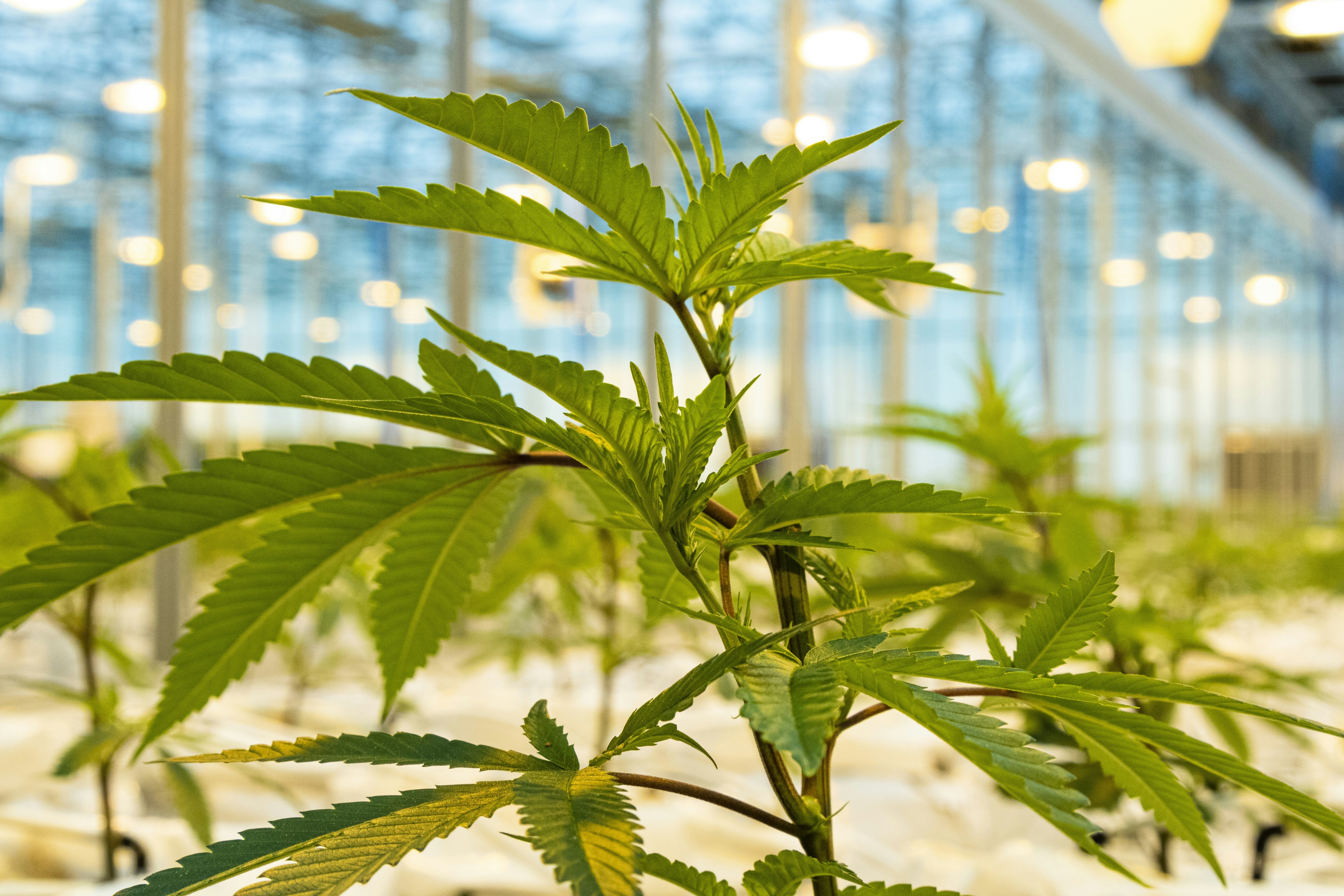Introduction to Hindu Kush Regular Strain
The Hindu Kush Regular strain has long been revered in the cannabis community for its rich heritage and specific characteristics, making it a preferred choice among growers. Originating from the Hindu Kush mountain range, which stretches between Afghanistan and Pakistan, this landrace strain showcases the unique environmental influences of its native region. The mountains’ rugged terrain and diverse climate conditions contributed to the strain’s robust properties, ensuring its resilience and adaptability.
Historically, the Hindu Kush strain has roots that date back centuries, often used by local cultures for its psychoactive and medicinal properties. The isolation of the mountainous area allowed the development of a stable strain, characterized by its short, bushy stature and dense, resinous buds. The strain’s high resin production has made it a staple for hash-making, particularly in regions where traditional cultivation practices have been passed down through generations. This historical significance carries into modern cultivation methods, where the Hindu Kush Regular strain continues to be a sought-after variety due to its hardy nature and relatively easy maintenance.
In modern cannabis cultivation, the Hindu Kush Regular strain is particularly appealing for growers aiming for a strong, disease-resistant plant. It delivers a high yield of potent buds, praised for their earthy and sweet flavors complemented by a relaxing body effect. With its stable genetics, this strain is often chosen for breeding programs or for growers who value reliability alongside potency. Ultimately, learning how to grow Hindu Kush Regular strain can provide cultivators with not just a connection to its historical roots, but also the opportunity to experience its rich flavor profile and beneficial effects.
Understanding the Growing Environment
To achieve optimal results when growing the Hindu Kush regular strain, it is crucial to comprehend the ideal growing conditions. This strain, renowned for its robust characteristics and potent effects, thrives under specific environmental parameters that can significantly influence its overall health and yield.
Temperature plays a pivotal role in the development of Hindu Kush. Ideally, daytime temperatures should range from 70°F to 85°F (21°C to 29°C) during the vegetative stage, while nighttime temperatures can drop slightly to around 60°F to 70°F (15°C to 21°C). Maintaining this temperature range sharpens the strain’s growth potential, fostering robust foliage and flowering. During the flowering stage, slightly cooler temperatures can enhance resin production, leading to a higher quality harvest.
Humidity is another essential factor to consider. For the vegetative phase, relative humidity levels should be maintained between 40% and 70%. As the plants transition into flowering, reducing humidity to around 30% to 50% is crucial to prevent mold and mildew, which can jeopardize the crop. Proper ventilation and airflow are vital in both indoor and outdoor setups to regulate humidity levels effectively.
Light exposure also significantly impacts how to grow the Hindu Kush regular strain. This strain flourishes under bright, direct light, so if growing indoors, using high-intensity discharge (HID) lamps or LED grow lights is recommended, ensuring they provide a spectrum that mimics natural sunlight. Outdoor growers should select a location that offers full sun exposure for at least six hours a day.
Regarding soil type, Hindu Kush prefers well-draining soil rich in organic matter. A soil pH between 6.0 and 7.0 is optimal for nutrient uptake. Utilizing a mix designed for cannabis cultivation can enhance drainage and nutrient availability, propelling impressive growth. By providing these ideal growing conditions, whether indoors or outdoors, cultivators can maximize their yield and ensure a successful harvest of the Hindu Kush strain.
Seeds vs. Clones: Choosing Your Starting Material
When considering how to grow the Hindu Kush regular strain, one crucial decision involves selecting the starting material: seeds or clones. Each option presents distinct advantages and limitations that can affect both the growth process and the eventual yield.
Starting with seeds typically offers greater genetic diversity, which is essential for cultivation. Seeds allow growers to access a wide range of phenotypes, and carefully selecting seeds can lead to plants with optimized traits suited for specific growing conditions. Additionally, seeds are often more resilient to pests and diseases. For growers considering how to grow the Hindu Kush regular strain, this can provide a certain degree of assurance that the plants will thrive under various environmental factors, particularly if one is new to the cultivation process.
On the other hand, clones provide a different advantage by guaranteeing uniformity. A clone is a genetically identical cutting from a mother plant, meaning that the traits of the Hindu Kush strain will be replicated accurately. This consistency can be particularly beneficial for those looking to maintain specific growth characteristics or optimize their harvest. However, clones can also come with hidden issues such as pests or diseases that may not show immediately. Therefore, it is imperative for growers to source their clones from reputable suppliers.
The choice between seeds and clones ultimately hinges on the grower’s experience level and overall goals. Beginners may benefit from the hardiness of seeds, while experienced cultivators may prefer the reliability of clones to yield consistent results from the Hindu Kush regular strain. By weighing these factors carefully, growers can make an informed decision tailored to their unique circumstances.
Germination and Seedling Stage
Successfully germinating Hindu Kush regular strain seeds and nurturing seedlings are crucial for establishing a healthy cannabis plant. The germination phase typically begins with obtaining high-quality seeds from a reputable source to secure genetic integrity. The seeds should be placed between damp paper towels in a warm, dark environment. It is essential to maintain the humidity levels around 70–80% and a temperature of approximately 70–75°F (21–24°C). Within a few days, you should see the seeds sprouting small white taproots, marking the beginning of the growth process.
Once the seeds have germinated, it is vital to transfer them to a seedling medium, which could include rock wool, root plugs, or a light soil mix that offers excellent aeration. When planting, create small holes and carefully place the seedlings, ensuring the taproot is pointing downwards. After planting, gently water the seedlings, allowing moisture to establish without oversaturating the soil. Too much water can lead to damping-off disease, which is detrimental to young seedlings.
During the seedling stage, essential care involves not only the appropriate watering but also the application of nutrients. Initially, the seedlings require minimal fertilization, as the seed’s stored nutrients usually sustain them for the first few weeks. However, after three weeks, introducing a diluted nutrient solution can promote vigorous growth. Choose balanced fertilizers with macronutrients like nitrogen, phosphorus, and potassium, as well as micronutrients for a comprehensive nutrient profile.
Additionally, humidity levels should be gradually reduced as the plants grow to strengthen their stems and prepare them for the later vegetative stage. Monitor water frequency closely and adjust based on the medium’s moisture level, ensuring that the seedlings receive adequate water without becoming waterlogged. Following these foundational steps on how to grow Hindu Kush regular strain during germination and the seedling stage lays the groundwork for robust plant development.
Nutrient Management for Optimal Growth
Nutrient management is a critical aspect of successfully cultivating the Hindu Kush regular strain. This strain, known for its resilience and rich flavors, thrives best under specific nutrient conditions. Understanding the role of macronutrients and micronutrients can significantly enhance the growth and vigor of your plants through their various growth phases, including seedling, vegetative, and flowering stages.
Macronutrients are the primary elements that plants require in large quantities. Nitrogen (N), phosphorus (P), and potassium (K) are vital for overall growth and development. For Hindu Kush, nitrogen is essential during the vegetative phase, promoting lush foliage and strong stems. As the plants transition to the flowering phase, an increase in phosphorus and potassium is necessary to ensure robust flower development and maximize yield. Regularly testing your soil can help you understand the specific nutrient needs and adjustments required based on the growth stage.
In addition to macronutrients, micronutrients such as iron, magnesium, and calcium play a crucial supporting role. These elements are required in smaller amounts but are indispensable for various physiological processes. A deficiency in any micronutrient can lead to stunted growth or nutrient deficiencies. Hence, providing a balanced nutrient regimen tailored to the Hindu Kush regular strain is paramount.
When it comes to fertilizers, growers can choose between organic and synthetic options. Organic fertilizers, derived from natural sources, improve soil structure and enhance microbial life, promoting long-term plant health. On the other hand, synthetic fertilizers can provide a quick and targeted nutrient boost but should be used cautiously to prevent nutrient burn. Finding the right balance and timing with these fertilizers will lead to a more fruitful harvest.
Soil amendments such as compost, worm castings, or peat moss can also significantly benefit the Hindu Kush, contributing essential nutrients and improving soil aeration and moisture retention. Frequent assessments and adjustments based on your plants’ specific requirements will facilitate optimal growth and ensure a vigorous and healthy crop.
Pruning and Training Techniques
Pruning and training techniques play a crucial role in maximizing the yield and overall health of the Hindu Kush regular strain. These methods enhance light penetration and encourage lateral growth, leading to bushier plants with more productive flowering sites. Among the most effective techniques are topping, FIMing, and low-stress training (LST). Understanding when and how to implement these techniques is essential for successful cultivation.
Topping is a method that involves removing the apex of the main stem to promote lateral branching. This technique is most effective when applied during the vegetative stage, typically when the plants reach 6 to 8 inches in height. By cutting off the top of the plant, you stimulate dormant buds on the lower nodes to develop, resulting in a more even canopy and increased bud sites. For those unsure about when to perform this technique, it’s advisable to wait until the plant has developed several sets of leaves to ensure it can recover effectively.
FIMing, which stands for “F**k, I Missed,” is similar to topping but entails cutting away only a portion of the top growth. This approach results in multiple tops rather than just one, further increasing yield potential. It can also be performed during the same stage as topping. To implement FIMing correctly, cut just above the node while leaving some growth intact, thus allowing for multiple new growth points to emerge.
Low-stress training (LST) is another advantageous technique that focuses on bending and tying branches down to encourage a broader light exposure. This technique can be initiated early in the vegetative period and continued throughout growth. By gently bending and securing stems, growers can create an open structure, leading to better light distribution and air circulation. This method complements topping and FIMing, as it promotes growth without the stress of severe cuts.
In conclusion, mastering these pruning and training techniques can significantly enhance the growth potential of Hindu Kush regular strain. By implementing topping, FIMing, and low-stress training effectively, growers can achieve optimal yields while maintaining healthy plants.
Flowering and Harvesting Tips
The flowering stage is a pivotal period for the Hindu Kush regular strain, as it dictates the quality and yield of the final product. Typically, this strain’s flowering phase lasts around 8 to 10 weeks, during which cultivators should closely monitor their plants for key signs of maturity. These signs include a change in the color of the pistils, which may transition from white to a darker orange or brown as the buds ripen. Additionally, the trichomes, which are tiny resinous glands on the buds, will shift from clear to cloudy and eventually to amber, indicating varying levels of THC maturity.
Determining the optimal harvest time is crucial for achieving the desired potency and flavor profile. For those seeking a more relaxing experience, harvesting when the trichomes are predominantly cloudy with a few amber ones can yield the best effects. Conversely, if a more stimulating effect is preferred, it may be beneficial to harvest while most trichomes are still clear. Given the Hindu Kush strain’s specific characteristics, patience and observation are vital during this phase.
Once the decision to harvest has been made, the next step involves proper trimming and curing practices to enhance the overall quality of the buds. It is recommended to trim the leaves around the buds immediately after cutting, as this will promote better airflow during the drying process. The ideal drying environment should be cool, dark, and well-ventilated to preserve the terpenes and prevent mold. Following the drying stage, the curing process can be initiated by placing the buds in glass jars, which allows for the development of rich flavors and aromas over time. Properly cured Hindu Kush buds display a superior quality, ensuring an enjoyable experience for both new and seasoned consumers.
Common Pests and Diseases: Prevention and Treatment
When cultivating the Hindu Kush regular strain, understanding potential pests and diseases is essential to ensure a healthy and bountiful yield. The integrity of your plants can be compromised by various insects and ailments, leading to reduced quality and quantity of your harvest. Among the common pests that may affect the Hindu Kush strain are aphids, spider mites, and whiteflies. These pests not only feed on the plants but can also transmit diseases that further weaken your strain.
To prevent infestations, it is crucial to maintain an optimal growing environment. Regularly inspecting your plants for early signs of pests is vital. Keeping your grow area clean, ensuring adequate airflow, and avoiding overwatering can significantly diminish the chances of pest proliferation. Introducing beneficial insects like ladybugs can also help control aphid populations naturally, creating a balanced ecosystem.
In terms of diseases, fungal infections such as powdery mildew and root rot are common threats to the Hindu Kush regular strain. Powdery mildew thrives in humid conditions and can be identified by its white, powdery appearance on the leaves. Ensuring proper air circulation and maintaining low humidity levels can effectively mitigate this risk. If an outbreak occurs, applying organic fungicides will help manage the infection.
Root rot, often caused by overwatering, leads to decayed roots and lethargic plant growth. To prevent this disease, it’s vital to allow the soil to dry out between waterings and use well-draining soil. If root rot is detected, remove affected roots and consider repotting the plant in fresh soil to give it a chance to recover.
By implementing these prevention strategies and remaining vigilant against pests and diseases, you can significantly enhance the health of your Hindu Kush regular strain, ultimately leading to a successful cultivation experience.
Conclusion: The Rewards of Growing Hindu Kush Regular Strain
Growing the Hindu Kush Regular strain is a rewarding endeavor that offers numerous benefits for cultivators. Renowned for its robust genetics and stable growth patterns, this strain is distinguished by its high-yield potential and unique characteristics. The Hindu Kush Regular strain thrives in various environments, making it an excellent choice for both novice and experienced growers alike. Its resilient nature ensures that cultivators will enjoy a successful harvest, even in the face of less-than-ideal growing conditions.
One of the prominent features of the Hindu Kush Regular strain is its rich, earthy flavors and pleasant aroma, which often evoke the essence of its native Himalayan region. This strain not only enhances the sensory experience but also provides an array of therapeutic effects, making it a favorite among medical users. Whether it is for relaxation or relief from stress, the benefits of cultivating the Hindu Kush Regular strain extend beyond just the physical returns; they also encompass personal satisfaction and enjoyment.
Furthermore, growing this strain allows cultivators to embrace the traditional breeding practices inherent in regular strains, thus fostering a deeper understanding of cannabis cultivation. As growers witness the complexities of plant development, they gain valuable insights into plant behavior and breeding potentials. For those eager to expand their cannabis growing knowledge, this strain serves as an ideal starting point.
We encourage readers to consider trying their hand at the Hindu Kush Regular strain. Not only will you appreciate the excellence in quality and yield, but you will also join a community of enthusiasts who celebrate this remarkable cultivar. Share your experiences, insights, and achievements with others, as the journey of growing the Hindu Kush Regular strain is as enriching as the rewards it yields.














